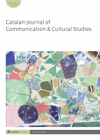
Full text loading...
 , Christopher D. Tulloch1
, Christopher D. Tulloch1
This study investigates the online news framing of police and protesters in Europe by looking at three late 2020/early 2021 protests: the vigil for Sarah Everard, killed by a police officer, the 47th Athens Polytechnic uprising anniversary rally and the protests against the imprisonment of Catalan rapper Pablo Hasél. A qualitative content analysis was conducted to analyse a sample of 114 articles, gathered from six ideologically opposed news outlets in the three countries. The results indicate that police actions are predominantly located within either the ‘police brutality’ or the ‘order-maintenance’ frame depending on the political orientation of the outlet while the framing of the protesters appears to be more fragmented. Results also suggest that it would be inaccurate to claim that only the right-wing press insulates the police. Overall, this study found media framing to be dependent on the perceived level of deviance of the protest.

Article metrics loading...

Full text loading...
References


Data & Media loading...

Publication Date:
https://doi.org/10.1386/cjcs_00099_1 Published content will be available immediately after check-out or when it is released in case of a pre-order. Please make sure to be logged in to see all available purchase options.